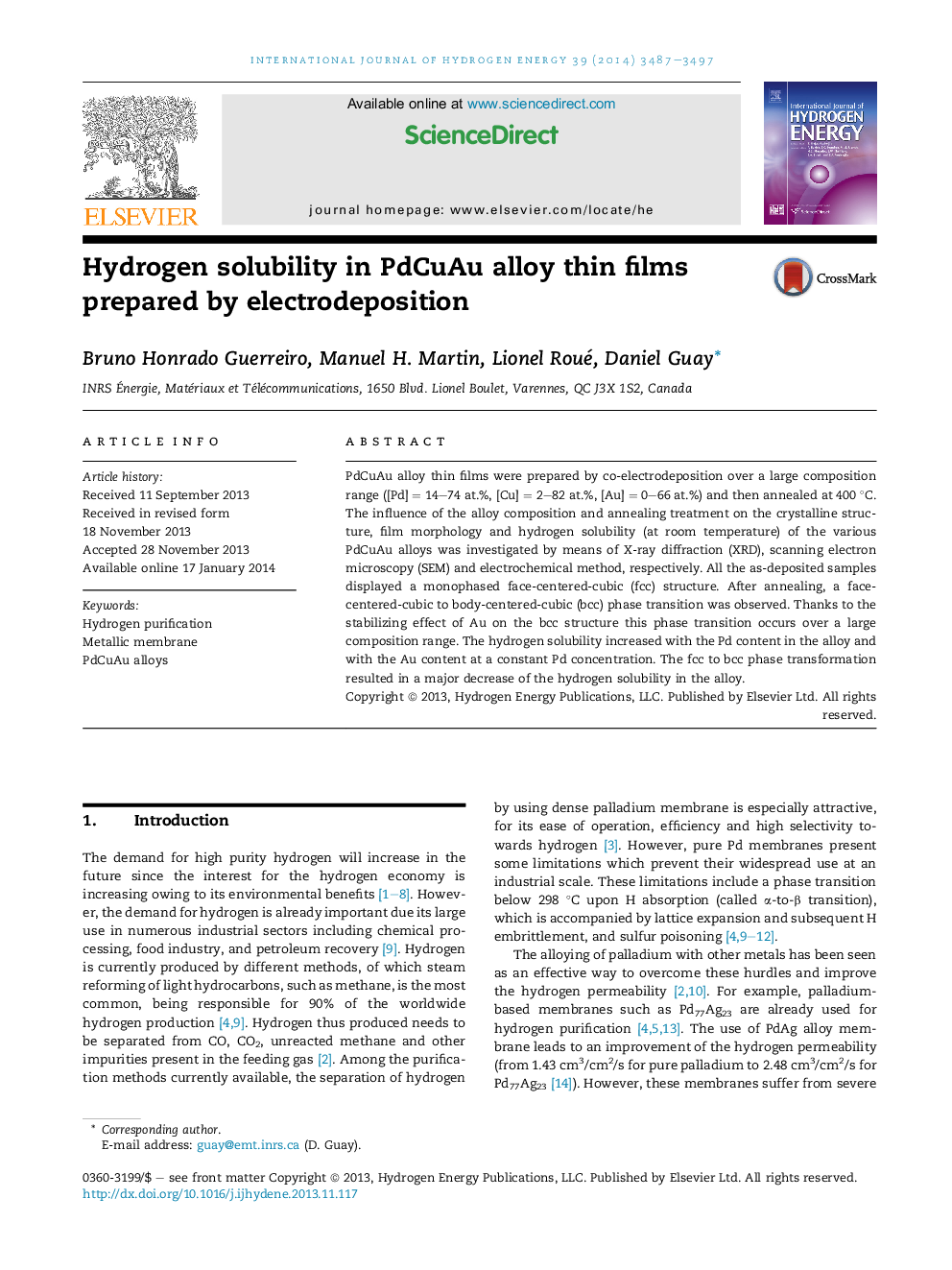| Article ID | Journal | Published Year | Pages | File Type |
|---|---|---|---|---|
| 1270654 | International Journal of Hydrogen Energy | 2014 | 11 Pages |
•Thin films made of PdCuAu are prepared by electrodeposition over the whole composition range.•All compounds are single phase with a fcc structure.•The hydrogen solubility was measured over the whole compositional range.•The hydrogen solubility increases with the Pd content.•At fixed Pd content, the hydrogen solubility increases when Cu atoms are replaced by Au atoms.
PdCuAu alloy thin films were prepared by co-electrodeposition over a large composition range ([Pd] = 14–74 at.%, [Cu] = 2–82 at.%, [Au] = 0–66 at.%) and then annealed at 400 °C. The influence of the alloy composition and annealing treatment on the crystalline structure, film morphology and hydrogen solubility (at room temperature) of the various PdCuAu alloys was investigated by means of X-ray diffraction (XRD), scanning electron microscopy (SEM) and electrochemical method, respectively. All the as-deposited samples displayed a monophased face-centered-cubic (fcc) structure. After annealing, a face-centered-cubic to body-centered-cubic (bcc) phase transition was observed. Thanks to the stabilizing effect of Au on the bcc structure this phase transition occurs over a large composition range. The hydrogen solubility increased with the Pd content in the alloy and with the Au content at a constant Pd concentration. The fcc to bcc phase transformation resulted in a major decrease of the hydrogen solubility in the alloy.
Graphical abstractFigure optionsDownload full-size imageDownload as PowerPoint slide
